
Honda WRV vs Maruti Vitara Brezza - Comparison Review
- Jul 21, 2017
- Views : 35666

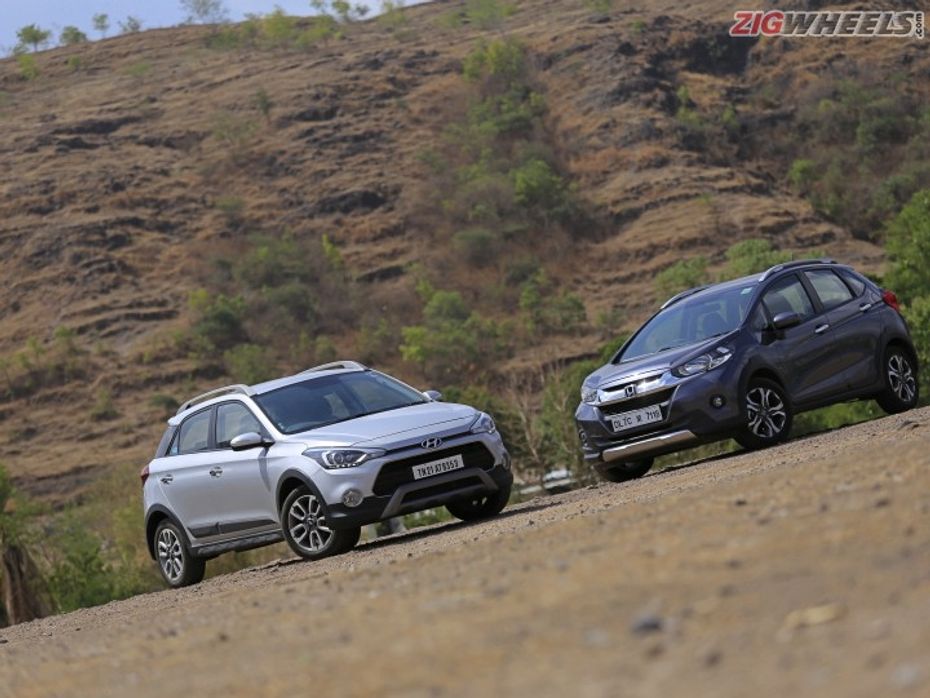
“Who needs these cars?” that’s a question that’s been bothering me. The Elite i20 and the Jazz seem like perfectly good cars, don't they? But, these two here promise a bit extra. They claim to be a notch better at handling our pothole-infested roads compared to their hatchback cousins and pack in a few extra features too. What really swings things in their favour, is the fact that they look more muscular, rugged, and butch compared to their hatchback cousins - that's something our SUV-adoring market loves.
The WR-V has entered the i20 Active's home ground. Has Honda made a better cross-hatch than Hyundai?
Spot The Difference!

On paper, the Hyundai and the Honda follow the same mantra. Take hatchback, add cladding — done. But there are differences in execution. The Active is instantly recognisable as an Elite i20 with some muscle. All panels on the car are identical to the hatchback, save for the front and the rear bumpers. The faux skid plates and the roof rails are thrown in for good measure as well. It’s a clean design that gets almost nothing wrong. But, at the same time, it does practically nothing to wow you or stand apart from its hatchback brethren. The added cladding and the new bumpers add 10mm to its length and 26mm to its width, whereas the jacked-up ground clearance adds 50mm in height.
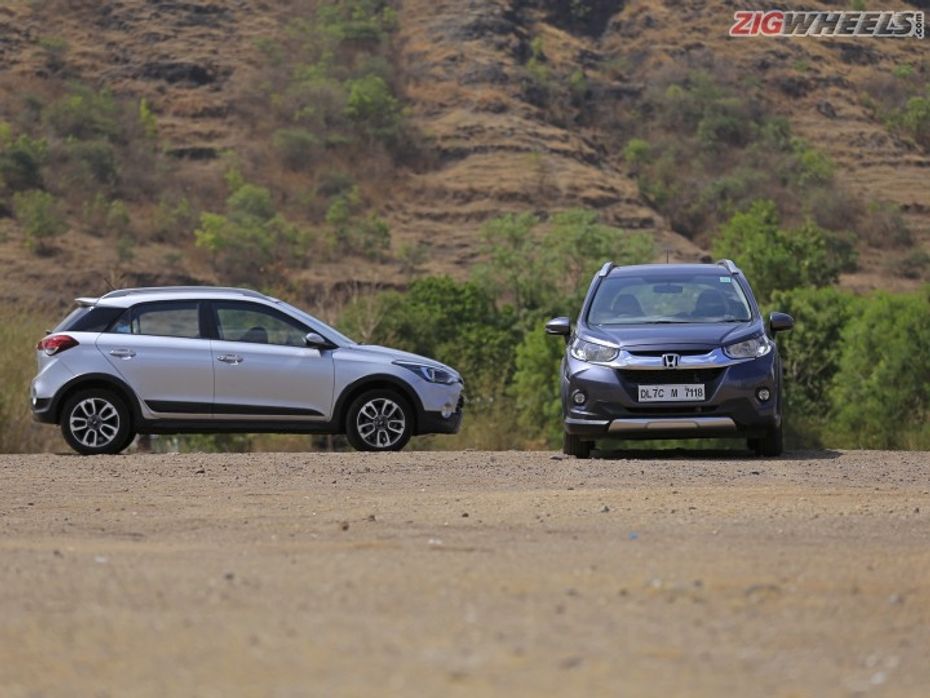
The WRV is quite different. In fact, look at one in the rear view mirror and you’d think it is anything but a Jazz on stilts. I wasn’t a big fan of the way the WR-V looked in pictures, and (sadly) looking at one up close didn’t change my opinion. It’s got the tough appeal, yes. The upright stance with the redone headlamps, bonnet and front bumper does well to give it a personal identity. It looks distinctly bigger too, and that’s because it is 44mm longer, 40mm wider and 57mm higher. Honda has gone to the lengths of altering the suspension mount points to liberate an extra 25mm in wheelbase. The WR-V is aggressive and in-your-face. But, good looking? We think not.
Pull up the numbers on an Excel -- the WR-V comes across as the bigger car. But it’s the i20 Active that has a longer wheelbase. Does this mean the Hyundai is more spacious on the inside?
Space-d Out

The answer to that question is a yes and a no. In terms of outright knee room, there’s no beating the Honda. In fact, the maximum space the i20 has to offer at the back is a full 100mm less compared to the least room the WR-V will let you use. The Jazz was already a spacious car, and adding 25mm to its wheelbase has only made things better.

But when it comes to shoulder room and headroom, the Hyundai has the Honda settle for second place. The seatback is set at a relaxed angle in the i20, and it has better under-thigh support as well.The Honda’s bench is upright and the seatback isn’t tall enough to fit bigger frames. Also, what’s surprising is the lack of adjustable headrests at the rear. Moreover, the seats are extra soft. While this is pretty good for daily commutes, you’re looking at stretching every couple of hours on road trips.
Here’s how the numbers stack up -
| Parameter | Knee Room | Head Room | Shoulder Room |
| i20 Active | 585-820mm | 970mm | 1325mm |
| WR-V | 925-1055mm | 940mm | 1270mm |
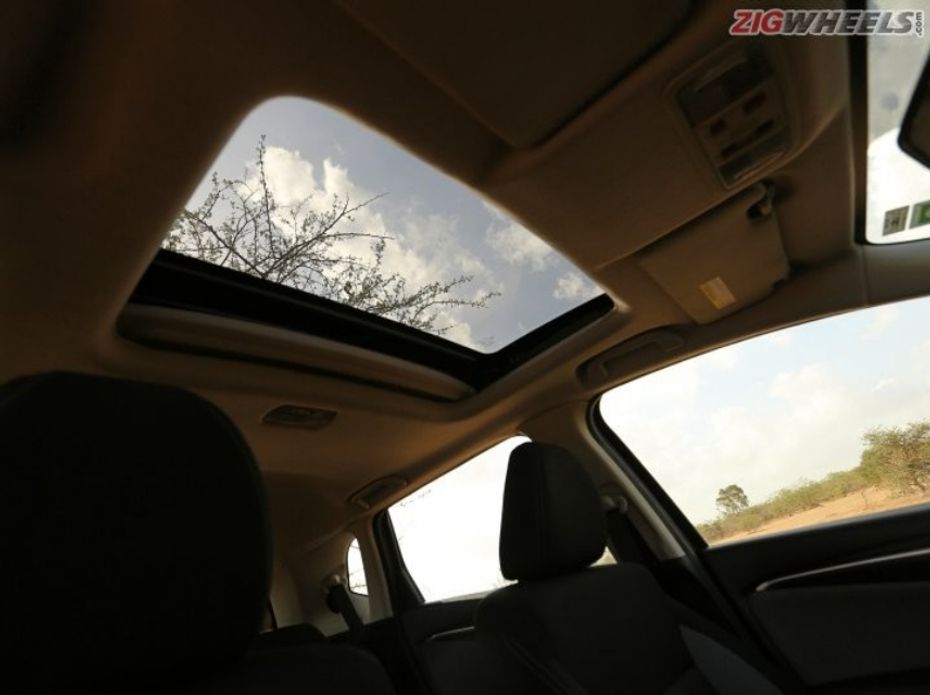
Where the WR-V scores big marks, is offering a sense of space. The XL-sized windows let a lot of light in, and there’s the sunroof in case you want some more Vitamin D. The Active, disappointingly, feels just like an Elite i20. In spite of the cabin being adequately spacious, you feel cocooned. This is amplified when you are seated at the rear; the rising window line and the small window doesn’t make you feel like you’re in a big car.
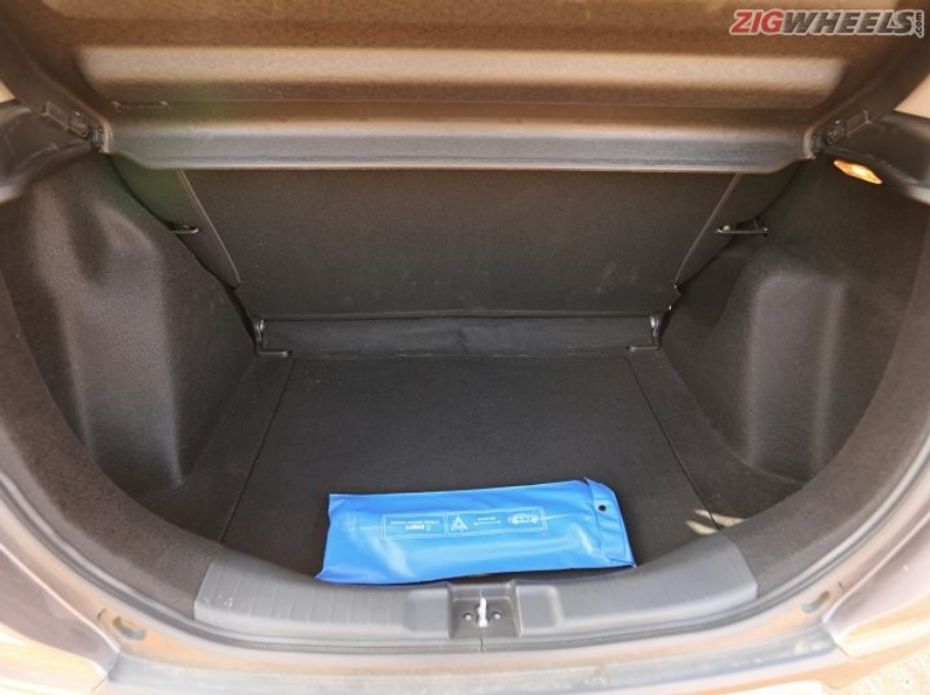
The WR-V’s boot managed to swallow our editor, and I’m sure we could’ve thrown in one of our interns too (if we had one). At 363 litres, it’s miles ahead than the 285-litre boot of the i20 Active.
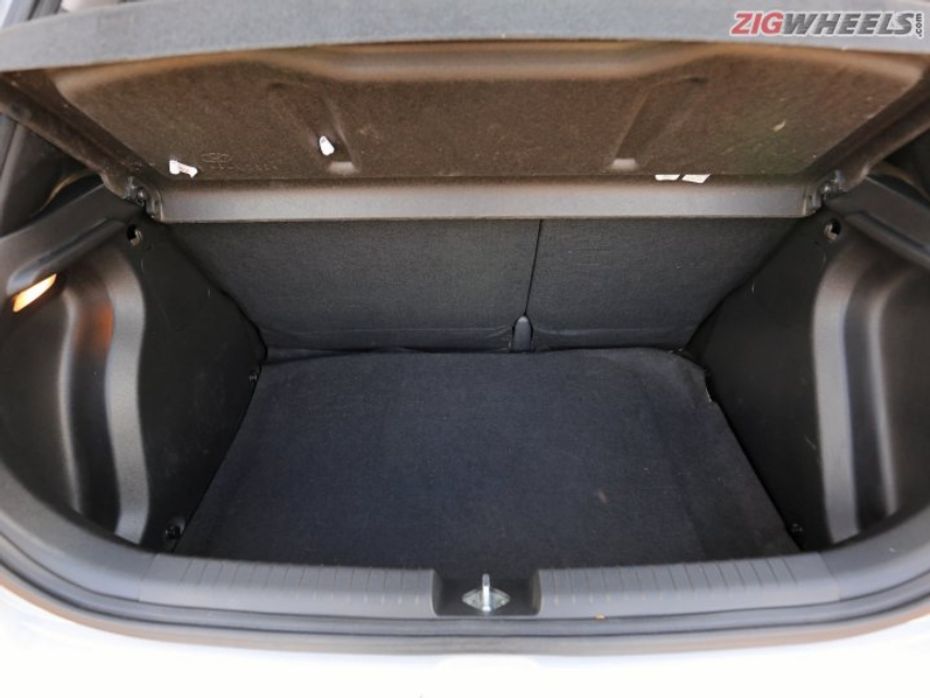
The solace with the Hyundai is that the rear seats get a 60:40 split, unlike the Honda. The Jazz’s fabled ‘magic seats’ have been skipped for the WR-V, which we think is a big big miss.
Feel Good?

Both cars you see here will cost you well over Rs 10 lakh on-road. It’s natural to expect them to make you feel like it’s money well spent. The Hyundai does, no two ways about it. The doors shut with a nice thud, the cabin is cut off from unnecessary ambient noise, and the quality of materials used on the dash and the door pads look and feel good.
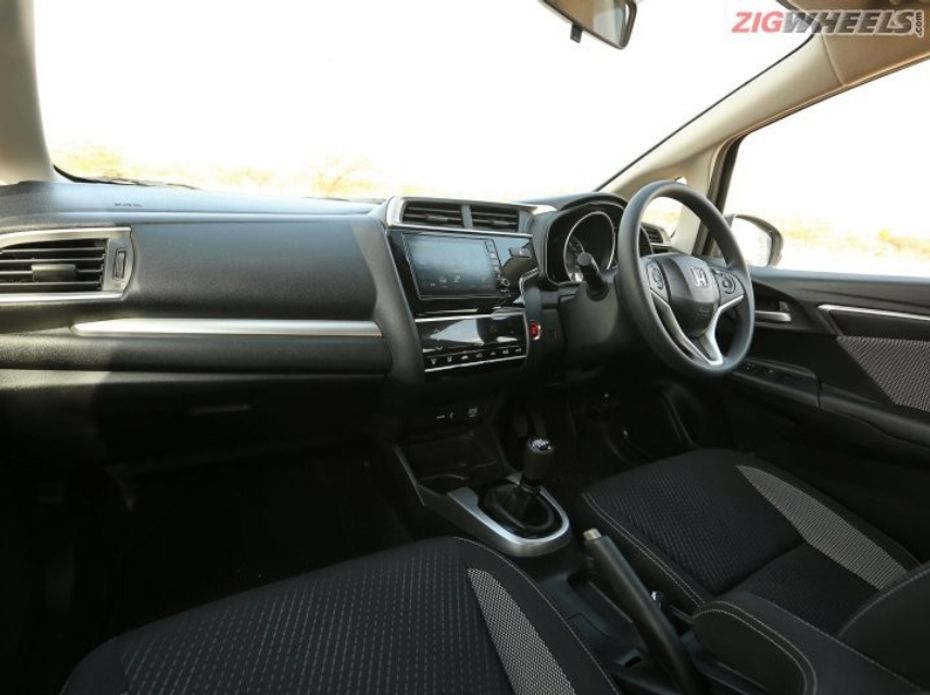
On the flipside, the Honda’s doors shut with a clang, and the sheet metal feels thin. The plastics on the inside, although substantially better than a Maruti Brezza, feels hard to touch compared to the Hyundai. Honda should’ve upped the quality a notch, we think.
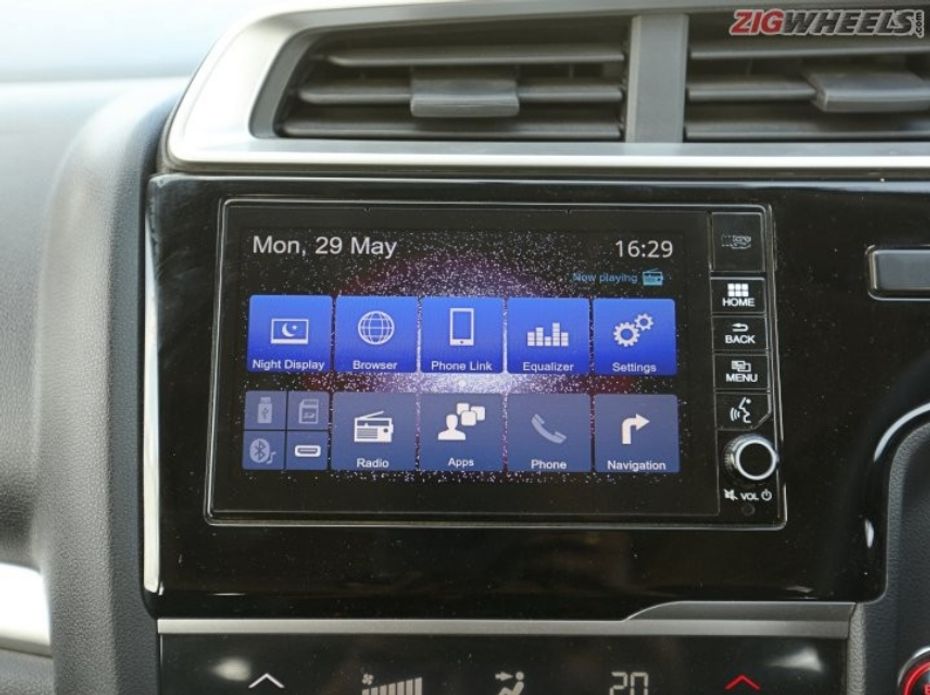
In terms of what you get for your money, the WR-V and the i20 Active are neck and neck. Both feature a touchscreen infotainment system. But where the Honda gets only MirrorLink, the Hyundai gets Android Auto and Apple CarPlay in addition. Also, Honda’s homegrown Android-based ‘Digipad’ system doesn’t deliver a smooth user experience. There’s quite a bit of lag when you quickly want to skip songs, and adjusting the equalizer requires a degree in rocket science.
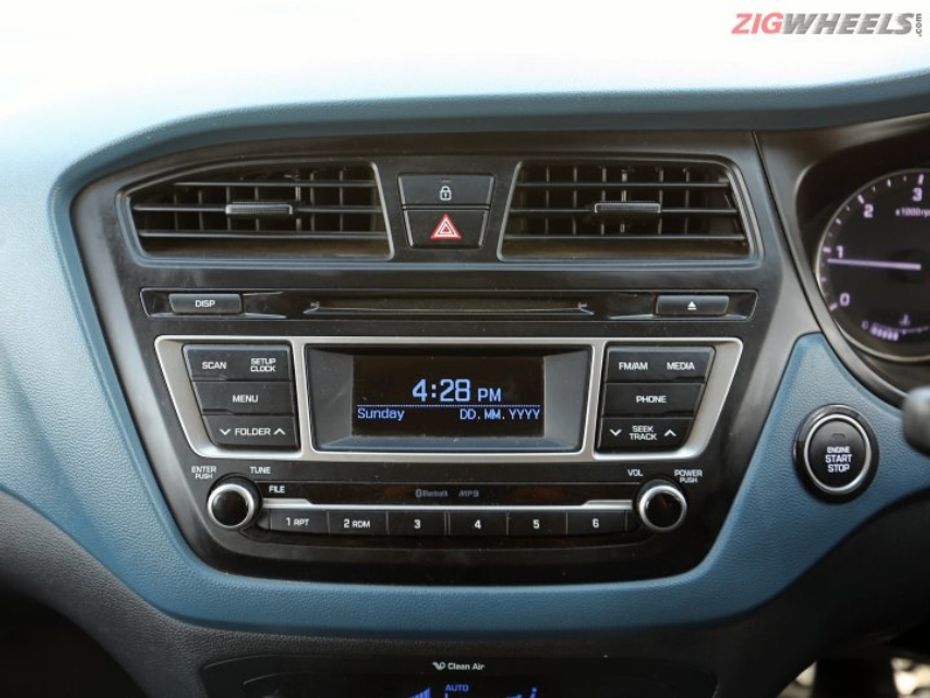
(Note: 2DIN Audio System pictured. Click here to see what the touchscreen looks like)
Our test i20 Active didn’t feature the touchscreen (since the car is nearly two years old), but it’s the same setup we’ve seen in the updated Grand i10 and the new Xcent. And that has a simple fuss- and lag-free interface. Both cars feature a 6-speaker setup, and there’s no perceptible difference in audio quality in music played via Bluetooth or FM.
Check Out: Hyundai Grand i10 Diesel - Road Test Review | 2017 Hyundai Xcent - Road Test Review

To keep you cool, both feature automatic climate control. In sweltering 40°C, it was the i20 Active that managed to keep the heat wave out. The Honda struggled quite a bit to chill the cabin, more so since it doesn’t feature rear air conditioning vents, unlike the Hyundai. Remember the aforementioned large glasshouse that makes the cabin feel airy? Well, it acts like a magnifying glass when you leave the car out in the sun. On a related note, I wish the sunroof could’ve been operated remotely - opening it up is the easiest way to get hot air out of the cabin.
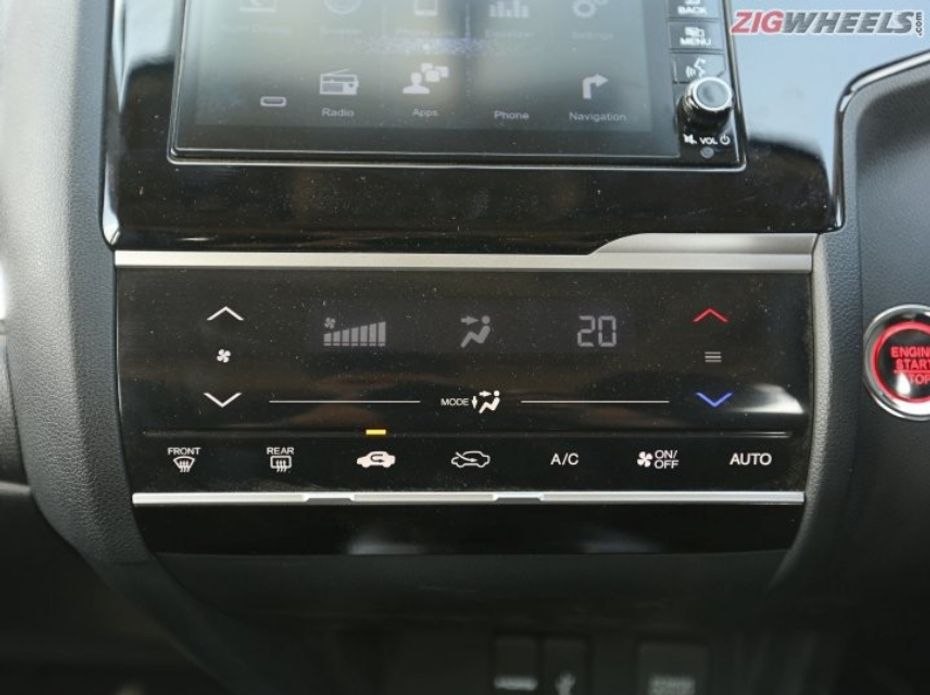
And, since we’re discussing ACs, the touchpad interface on the WR-V isn’t easy to use on the move, besides being a fingerprint and dust magnet. The Hyundai’s simple two-knob interface for the fan speed and the temperature falls to hand easily. Moreover, you can feel a prominent click as you turn it — no need to look at it.
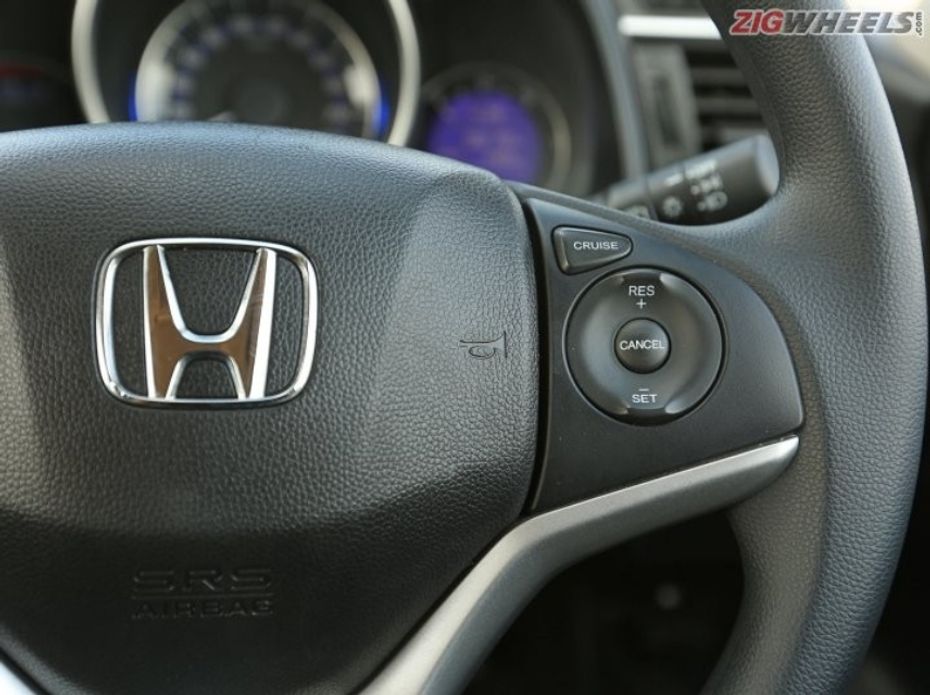
Other commonalities include keyless entry and go, electrically folding mirrors, tilt-telescopic adjust for the steering and steering-mounted controls. The WR-V’s big trump card includes cruise control (limited to the diesel variant) and a sunroof, both of which the i20 Active misses out on. To counter, the Hyundai offers six airbags. Better be safe than showy?
Crossing Over
On paper, there’s not much separating the two. The Honda gets a 1.5-litre diesel engine with 100PS and 200Nm on tap, whereas the Hyundai gets a 1.4-litre with 90PS and 220Nm. Both cars feature a 6-speed manual gearbox as well. Are they different in the way the drive?
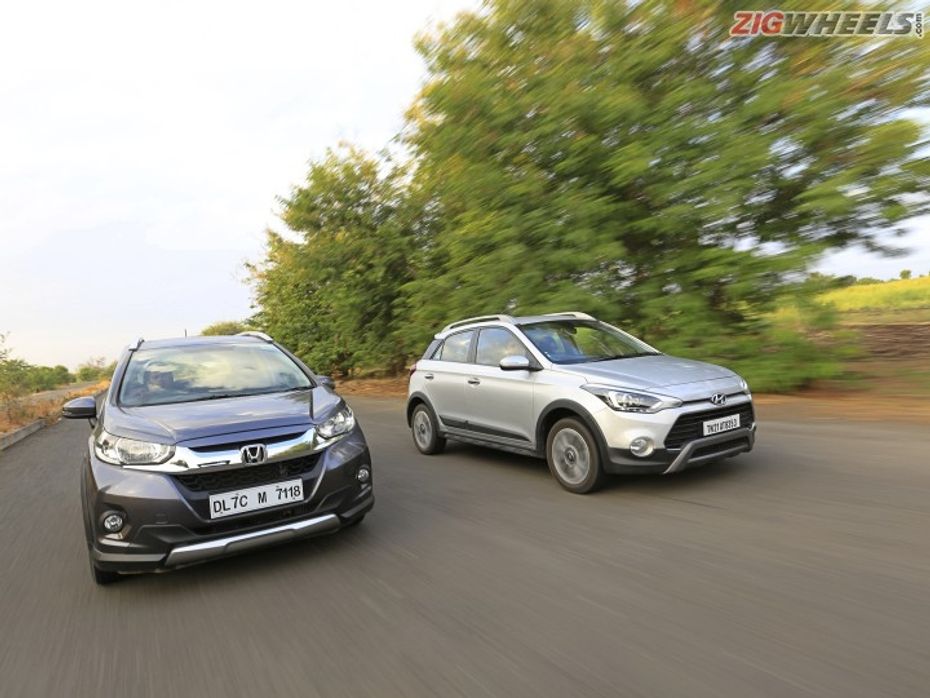
Inside the city, it’s hard to tell them apart. Both engines feel easy to drive, and turbo lag is controlled well. What’s worth noting is that the i20 Active’s torque not only kicks in earlier, but also continues to linger for a really long time. The lull before peak torque kicks in isn’t all that frustrating either. You can put your foot down in-gear and the i20 Active gathers pace a shade quicker. How quick, you ask? 30-80kmph in third took 8.79 seconds in the Hyundai, whereas the Honda took 8.89 seconds. This gulf widens substantially when you’re in a higher gear. Case in point: 40-100kmph in fourth took 13.47 seconds in the Active and 14.22 seconds in the WR-V.
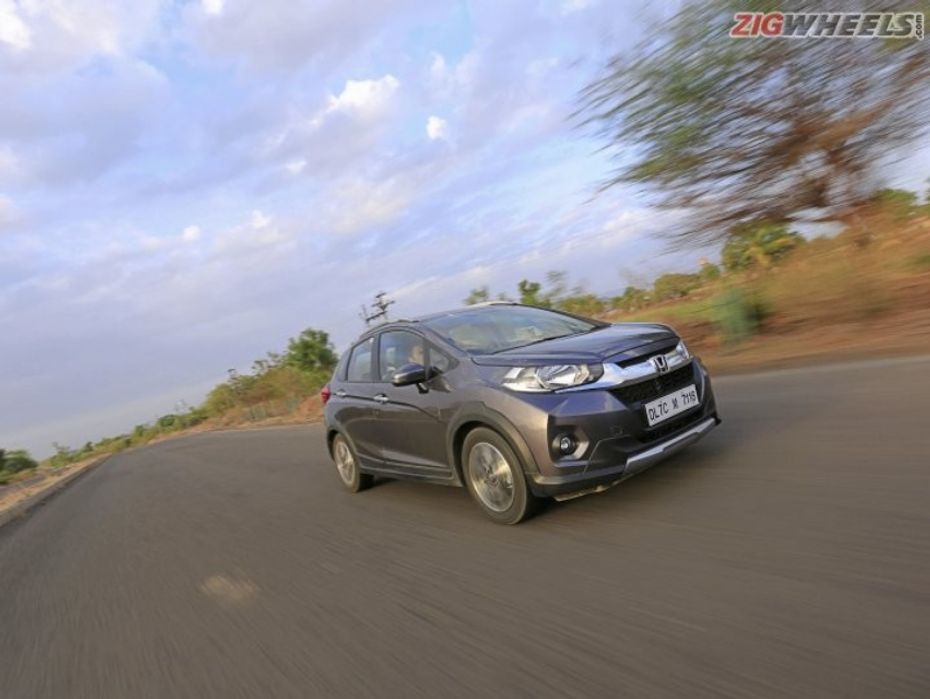
The Honda is quicker in an outright 0-100kmph sprint, taking 12.43 seconds as opposed to the Hyundai’s time of 13.3 seconds. But the i-DTEC motor shouts and screams in protest. Inside the cabin, it isn’t as noisy as the Amaze, but it’s still loud enough to force you to talk in a higher volume. You can also feel some vibrations through the pedals and on the firewall, which seems like the polar opposite of what Honda once stood for - refinement.
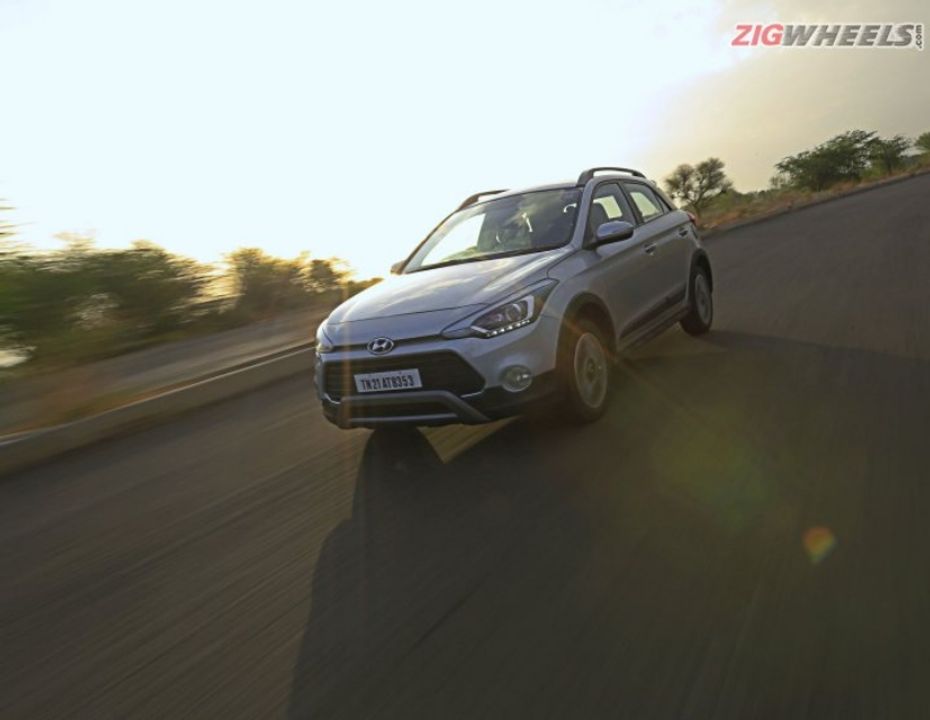
Cruising at 100kmph in the Active sees the tacho tick right where the torque is. This means you can go harder on the gas and it will rocket ahead almost instantly. In the Honda’s case, you’d have to wait for a while before you actually get going. I found myself downshifting more often in the WR-V to keep up with the i20; which by the way isn’t particularly fun thanks to the clunky gear shifts.
For the number crunchers, the WR-V retuned 25.88kmpl on the highway and 15.35kmpl inside the city. The i20 was less efficient on the highway, returning 23.8kmpl but more frugal inside town at 16.36kmpl. Impressive.
Where are your manners?

You’d appreciate the WR-V’s ride quality on a casual drive to work or the market. It’s soft and smooth, going over potholes without batting an eyelid. The i20, on the other hand, feels a notch harder over bumps. But, in both cars, you won’t really hear the suspension working. And that’s a good thing.
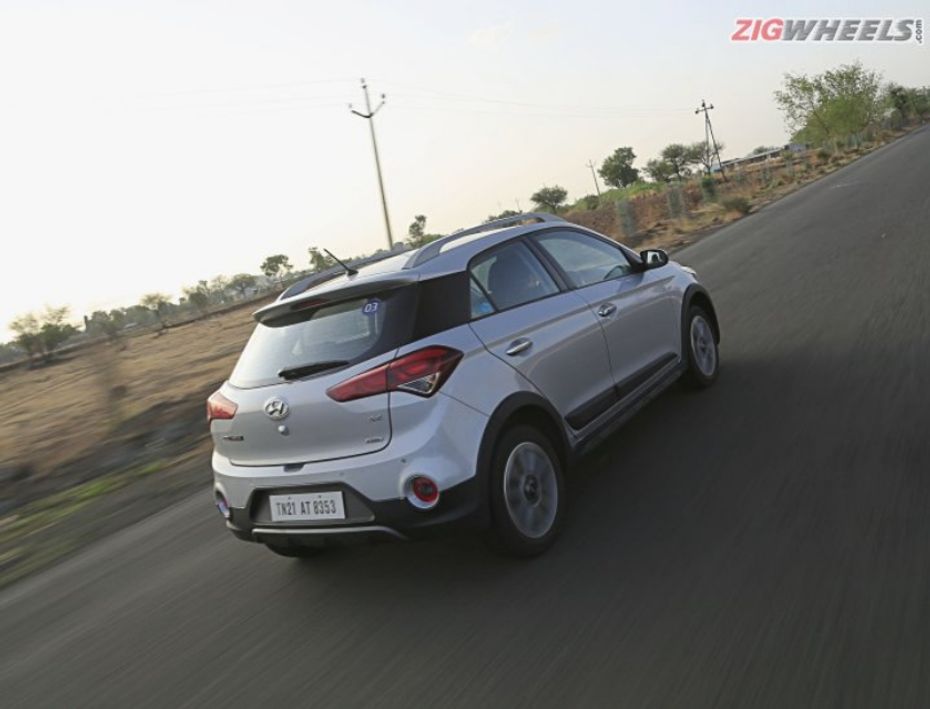
The Hyundai’s stiffer setup comes to its rescue when you take it out for a spin on the highway. The suspension is markedly stiffer compared to the Elite, which means the cabin remains flat, and there’s none of the bouncy business Hyundais were infamous for over the past decade. Weirdly enough, the Honda feels unsettled at speeds as low as 80kmph. The raised ride height and soft springs in tandem cause enough bounciness to make you have a knot in your stomach over long journeys. On the flipside, the Jazz has a neutral ride. Why fix something that isn't broke, Honda?
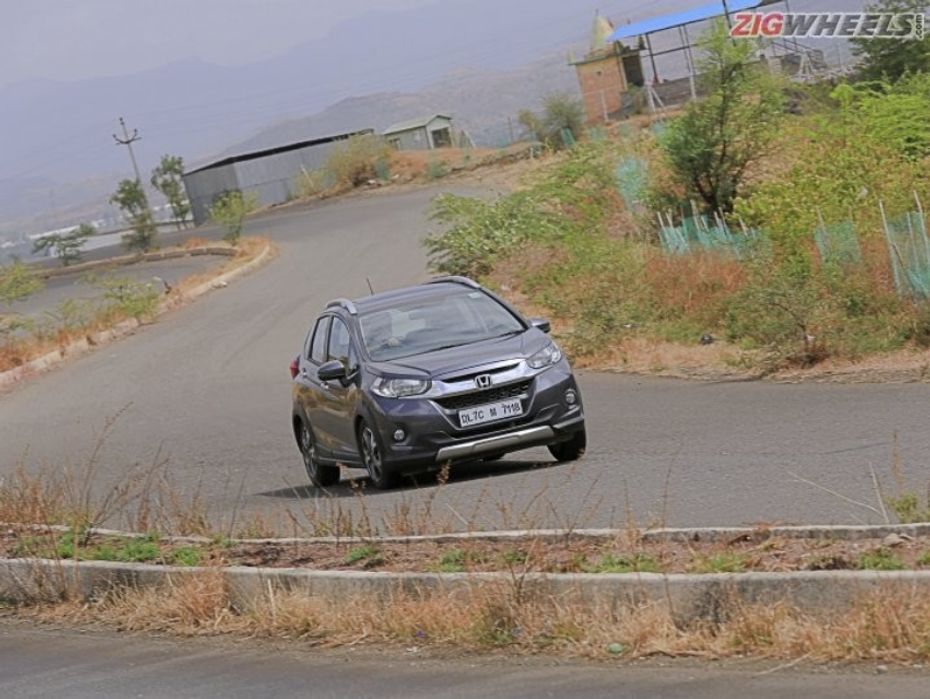
In case you’re driving the WR-V on the highways, you’d want more weight on the steering. The steering feels disconnected, and you’re often left guessing what the front wheels are upto. On those long swooping corners, the WR-V requires a fair bit of steering corrections. Thankfully, inside the city, that’s not a problem. The light steering feels predictable and takes the sting out of city driving. The Active’s steering is markedly heavier in comparison. That, and the planted ride makes it a better highway cruiser in our books. If we had to complain, the i20’s steering isn’t very good at reading the surface for you, and feels overly assisted at times.
Spec Comparo: WRV vs i20 Active vs Cross Polo vs Etios Cross!
Which H to choose?
When I first left for Pune in the i20 Active, I thought this contest would be quite closely fought. Both cars cost nearly the same - Rs 9.78 lakh for the Hyundai and Rs 9.99 lakh for the Honda. There’s not much separating the two when you sit down with the brochures, and I expected that to translate on road as well.

Sadly, that’s not the case here. Honda hasn’t done enough to capitalise on the strengths of the WR-V. For instance, the raised ground clearance has led to a bouncy ride; space is good, yes, but the seats are too soft and miss adjustable headrests at the back. Aside from your aspiration for a newer model, the only reasons to buy the WR-V over the Active include the in-city ride, rear knee room, a big boot and the sunroof. Everything else, the Hyundai does better. It's easier to drive, the engine feels a whole lot more refined, there's more safety tech, and the build quality is a notch above, all of which put together makes you feel like it's money well spent.

Honda WRV vs Maruti Vitara Brezza - Comparison Review

Honda WR-V vs Maruti Vitara Brezza: Comparison Review

Honda WR-V vs Hyundai Active i20 vs Volkswagen Cross Polo vs Toyota...

WR-V vs Vitara Brezza vs EcoSport : Spec Comparison

Honda WR-V vs Honda Jazz: What's Different?

2020 Maruti Suzuki Vitara Brezza Petrol vs Rivals: Engine...

2020 Hyundai Venue BS6 vs Rivals: Diesel Engine Specifications...

Hyundai Venue vs Renault Duster: Petrol Automatic Comparison Review

Hyundai Venue DCT vs Renault Duster CVT: The Stress Test!

Hyundai Venue vs Mahindra XUV300 vs Ford EcoSport: Comparison
India's largest automotive community
 2025 Kia EV6 Facelift Launch In March 2025: What Do We Know So Far?
2025 Kia EV6 Facelift Launch In March 2025: What Do We Know So Far?
 A Luxurious Yet Sustainable MPV, Meet The MG M9 At Auto Expo 2025: Explained In 10 Images
A Luxurious Yet Sustainable MPV, Meet The MG M9 At Auto Expo 2025: Explained In 10 Images
 Have A Knack For Modified Cars? Check Out These Custom Cars At Auto Expo 2025
Have A Knack For Modified Cars? Check Out These Custom Cars At Auto Expo 2025
 Auto Expo 2025: BYD Sealion 7 Explained In Our Detailed Image Gallery!
Auto Expo 2025: BYD Sealion 7 Explained In Our Detailed Image Gallery!
 Honda Amaze
Rs. 7.99 Lakh
Honda Amaze
Rs. 7.99 Lakh
 Honda City
Rs. 11.82 Lakh
Honda City
Rs. 11.82 Lakh
 Honda Elevate
Rs. 11.69 Lakh
Honda Elevate
Rs. 11.69 Lakh
 Honda City Hybrid
Rs. 19.00 Lakh
Honda City Hybrid
Rs. 19.00 Lakh
 Honda Amaze 2nd Gen
Rs. 7.19 Lakh
Honda Amaze 2nd Gen
Rs. 7.19 Lakh
 Hyundai Creta
Rs. 11.10 Lakh
Hyundai Creta
Rs. 11.10 Lakh
 Tata Punch
Rs. 6.12 Lakh
Tata Punch
Rs. 6.12 Lakh
 Mahindra Thar ROXX
Rs. 12.99 Lakh
Mahindra Thar ROXX
Rs. 12.99 Lakh
 Tata Nexon
Rs. 7.99 Lakh
Tata Nexon
Rs. 7.99 Lakh
 Mahindra XUV700
Rs. 13.99 Lakh
Mahindra XUV700
Rs. 13.99 Lakh